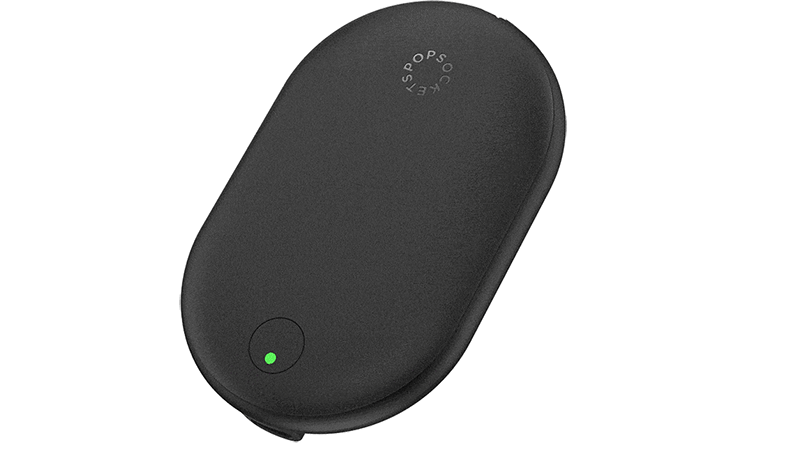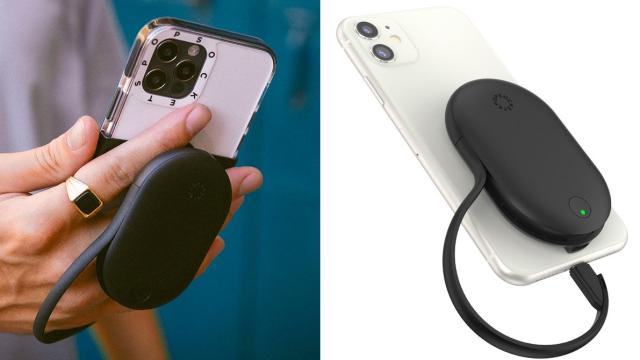You can turn your nose up at the thought of sticking a big button to the back of your smartphone, but PopSockets have probably saved millions of devices from falling to their doom, and the company’s latest innovation means PopSockets users don’t have to worry about a dead battery either.
The new PopSockets PopGrip JumpStart Lightning, announced Thursday, is much larger than a standard PopSockets grip. That’s because inside the oval-shaped attachment is a 2,200 mAh rechargeable battery that can be used to revive a dead phone to roughly 50% of its capacity. It’s available right now through the PopSockets website for $US35 ($49).

If you’re unfamiliar with PopSockets, they’re collapsible plastic buttons, roughly the size of a poker chip, that attach to the back of a mobile device like a smartphone to provide a more secure grip between fingers when holding a device one-handed. Think snapping a group selfie with a phone at arm’s length. PopSockets come in an array of different designs and can be secured to a device using removable adhesive pads, custom phone cases, or even temporary mounts that securely connect to the iPhone’s magnetic MagSafe feature.

While the PopGrip JumpStart Lightning can be attached to iPhones using the brand’s PopMount2 system and Apple MagSafe, the battery doesn’t actually offer any wireless charging capabilities. Instead, a short cable that wraps around the accessory is used to physically connect the battery to a smartphone’s charging port, and both Lightning and USB-C versions of the PopGrip JumpStart Lightning are available to use with either Apple or Android devices. The battery can be removed from the device with a 180-degree twist, leaving the mount still attached.
The battery inside the PopGrip JumpStart Lightning itself charges through a USB-C port on the bottom with pass-through capabilities so that when connected to an external power source and a phone, the mobile device will charge first before the battery tops itself off.
